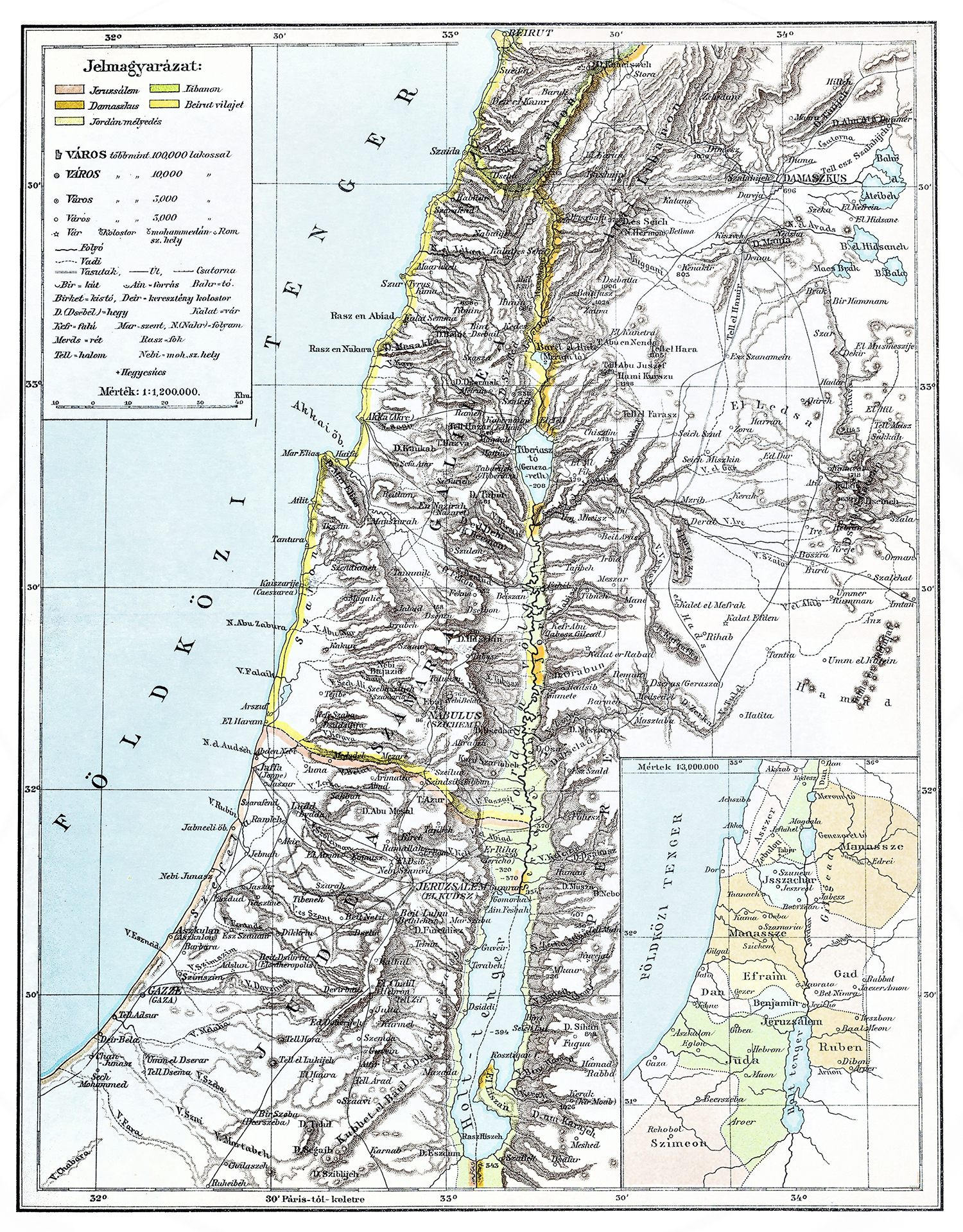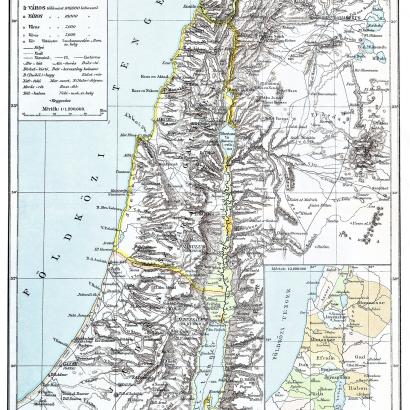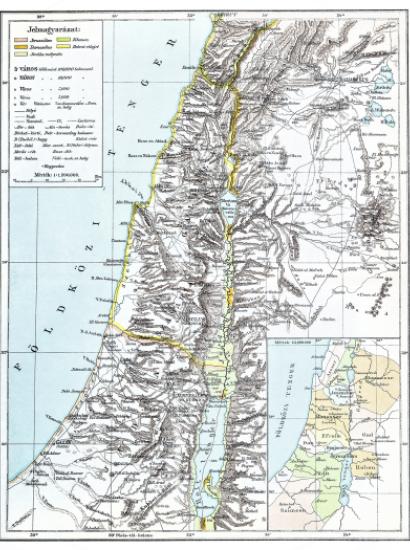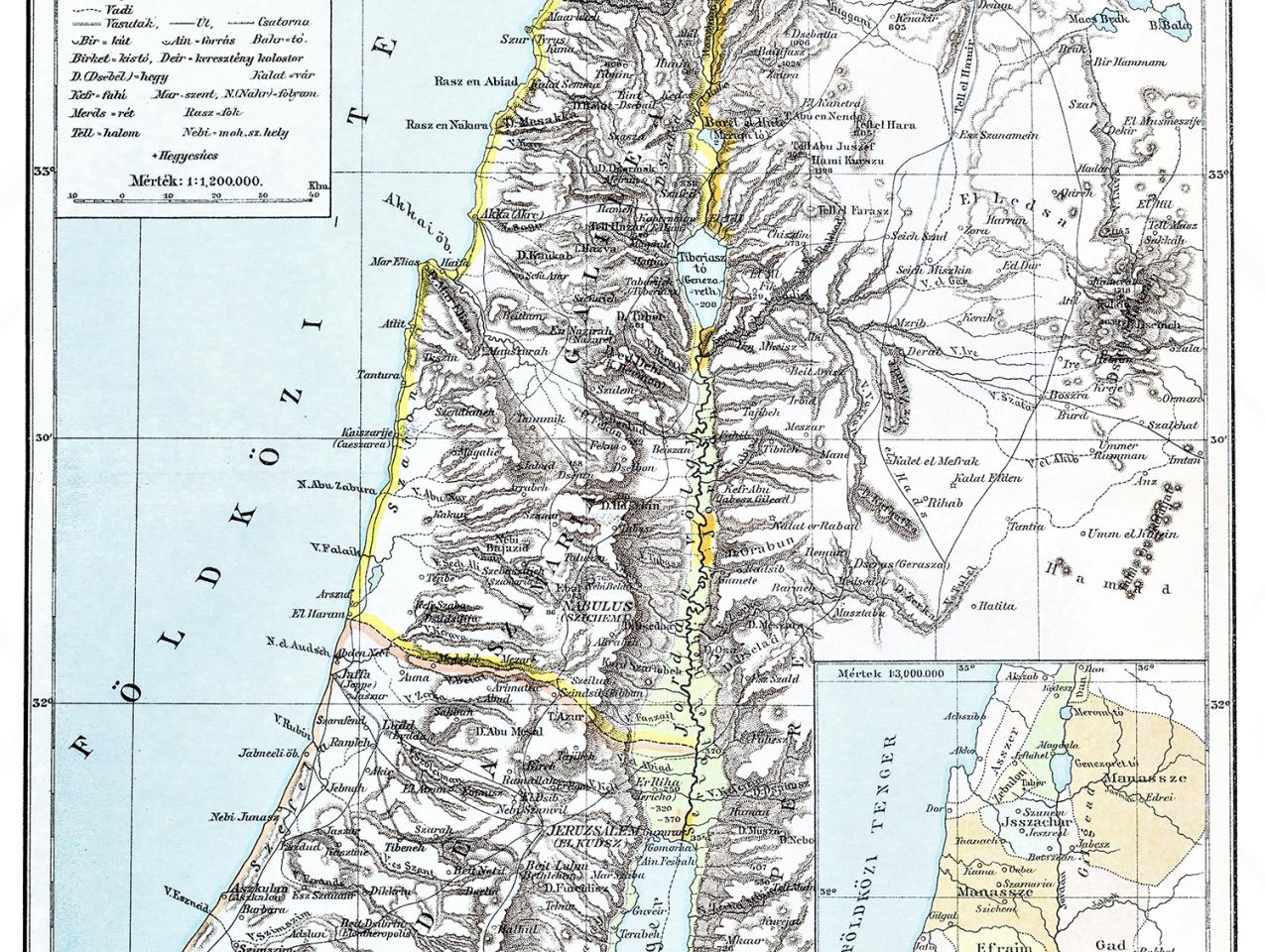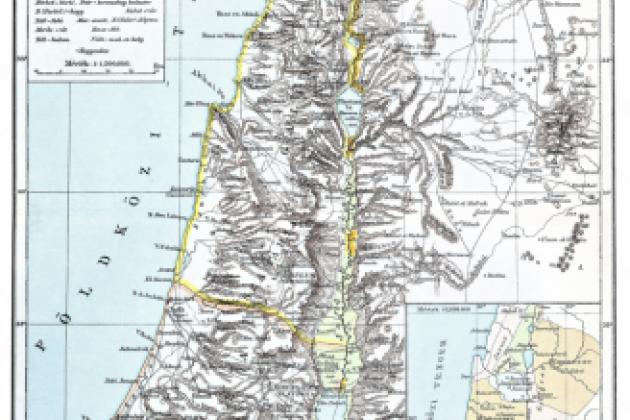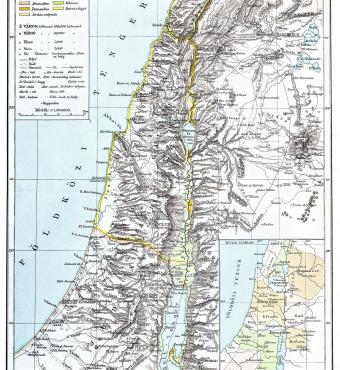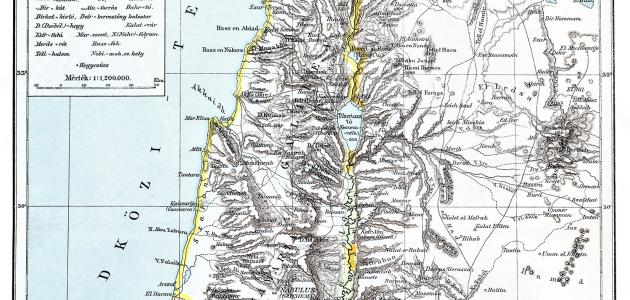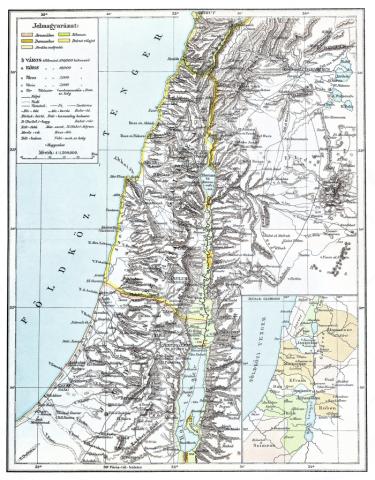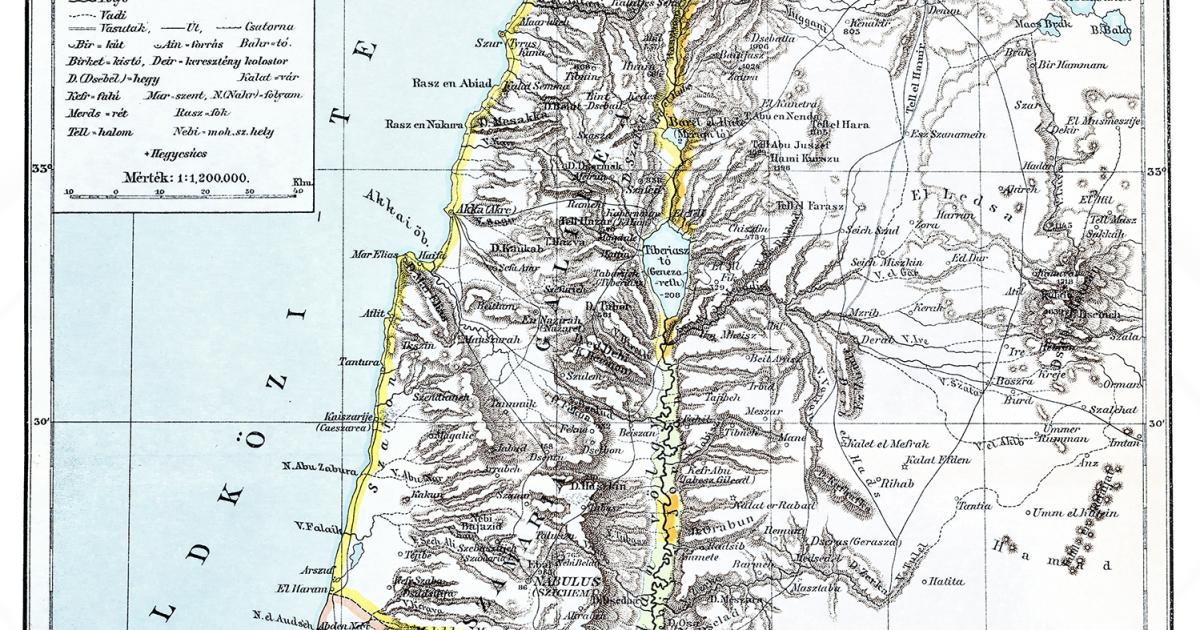The October 7, 2023, Hamas attacks on Israeli civilians, and the worldwide moral outrage that that day’s savagery generated were only paralleled by a gleeful schadenfreude that overtook many European capitals and other places around the globe, from the Arab world to the United States to American university campuses outright celebrating the greatest loss in Jewish life since the Holocaust. What is the root cause of such stark, vile dichotomies when it comes to Israel, pitting on the one hand a camp of empathy and on the other one of resentment? How is it that alongside Western sympathizers there are always those depicting Israel as the eternal offender, forbidden from defending itself, even at the risk of being depicted in the most hideous of antisemitic tropes? Conversely, why is it that among Arabs and Muslims, Palestinians are consistently, uncritically, portrayed as eternal victims, beatific casualties of Israeli Apartheid who can do no wrong, and whose own brutality is the justifiable result of grievances long unheeded and a righteous legitimate expression of self-defense?
What follows is an attempt to understand the intractable nature of the Arab-Israeli conflict and the divisiveness that it generates around the world. I will try to explain not by taking sides, not by passing a sentence on who is right and who is wrong, not by drawing Manichaean fault lines between Good and Evil, and not by proceeding from the premise of the militant Zionist or the Arabist activist. In this, I shall assume the role of a historian recounting a complex story, probing its details, interrogating its players, exploring their languages and their languages’ connotations, and interpreting the whole in an intelligible voice devoid of the prevailing Wokeist frills of our times. I shall do that while remaining mindful of this story’s challenges, avoiding its ideological partis pris, and steering clear of the tendency to discard nuances and realities for the sake of soothing emotions and mythologies. In the end, there are “origin stories” to this conflict that ought to come to the fore, ones that are often scorned in favor of resentments, platitudes, political correctness, and the human condition’s natural urge for settling scores.
One Origin Story
Let us begin with the lay of the land of today’s theater of conflict between Israelis and Palestinians, a quick, oversimplified lesson, as it were, in the history, geography, and toponymy of what is commonly referred to as the Arab-Israeli conflict.
On the eve of the Great War, the Levantine political entities known today as Israel, Lebanon, Syria, Jordan, and Palestine did not exist as distinct geographic, national, or administrative units. All were territories of the Ottoman Empire (1516-1918); all had inhabitants who were subjects of that empire; all flaunted no distinct identities of their own besides being on the one hand privileged Muslim members of the Umma (the “nation of Islam”) and on the other hand underprivileged Millets, which is to say non-Muslim Dhimmi peoples or “lesser nations,” living on sufferance in the “the abode of Islam.” Those Millets, in the main Christians and Jews, were subject to the Dhimma system: an institutionalized complex of legal, social, political, and cultural handicaps—“institutional racism” in the language of today’s virtuous bien-pensance, a form of “legal discrimination”—that guaranteed the Millets’ physical safety and ability to keep pre-Muslim traditions in return for fealty and submission to an otherwise hostile, predominantly Muslim, universe. Under this Dhimma arrangement, a “system of protection” as it is often described in tidy academic terminologies, Christians and Jews in the world of Islam were “tolerated” peoples denied political and cultural rights, disenfranchised in their own homelands, lands from which they’d been dispossessed by seventh-century Muslim conquerors—"colonial settlers” in the normative language of our times. Describing this system in the late Ottoman period, Lebanese historian Zeine Zeine noted that Christians and Jews were “tributary people whose life and property were safe only by the good pleasure of the Turkish authorities”; that they lived in “an inferior and humiliating position compared with the Muslims”; that they were forbidden from bearing arms or entering civil service; and that they had to be “outwardly distinguished by the colors of [their] dress, [their] headwear and [their] shoes.”[1] Zeine noted further that national identities as we understand them in the West did not exist in the Ottoman world:
All the ties, relationships, and loyalties were denominational and religious, primarily Muslim [Jewish] or Christian ... National unity was impossible under the circumstances … The Arab Muslim, speaking of the Ottoman Empire, could say “it is also my Empire,” for it was a Muslim Empire and the Muslim felt at home in it. But the Christian [and the Jew] was conscious most of the time that he was only one of the ra‘iyyah.[2]
But this system of unequal relationships between Ottoman Muslims and non-Muslims would come to an end in the Great War’s aftermath. Alongside its tragedies and losses, the War’s conclusion would also conduce to the “emancipation” of non-Muslims in Muslim lands. Having chosen wartime’s “losing team,” the Ottoman Empire was dissolved in October 1918, leading to the abrogation of the Millet system and the redesigning of the eastern provinces of the former Empire by Britain and France, the war’s “winning team.” This task was guaranteed by a regime known as the League of Nations Mandate system, the purpose of which had been to shepherd the former Ottoman subjects into modern “citizenship” and shape their newly redesigned territories into modern states. Thus, based on this arrangement, and under the auspices of the League of Nations (predecessor of today’s United Nations), France was given “Mandate” over the former Ottoman Provinces (Vilayets) of Beirut, Damascus, Aleppo, and the Sanjak of Mount-Lebanon, creating out of them what became known as Syria and Greater Lebanon (later tout court Lebanon). Concomitantly, Britain was assigned the former Ottoman Vilayets of Basra, Baghdad, and Mosul, stitching them together into today’s Iraq. Britain was likewise assigned the former Ottoman Sanjak of Jerusalem and the southern parts of the Vilayets of Beirut and Damascus, creating out of them what became known as Mandatory Palestine. Mandatory Palestine would undergo an additional makeover in 1921, creating from its eastern flank the Hashemite Kingdom of Transjordan, today’s Jordan.
Therefore, prior to this arrangement, none of the states mentioned above existed. There was no Syria nor a distinct Syrian national identity to speak of, no Palestine nor a Palestinian national consciousness among Arabs, and, as modern Iraq’s travails keep reminding us, no distinct, unified Iraqi history, memory, or esprit de corps. What is more, most of these newly Mandated entities were assigned “national names” owed not to their own histories or languages, but to European (Anglo-French) toponymic and geographic habits, Western traditions not only reflecting a tenuous local authenticity but also affirming the origins of modern Middle Eastern states as Western spawns adhering to Western political models and national assumptions. There were of course notable exceptions. Egypt had always been Egypt. In Lebanon, or to be exact in Mount-Lebanon, there were Maronite Christians who had long viewed themselves as Lebanese with a separate non-Arab identity, members of a “Lebanese nation, distinguished by a … culture dating back to the Phoenicians.”[3] Finally, in the Holy Land, there were also local Levantine Jews who dreamt of the redemption of the Jewish people and their restitution to their ancestral homeland in the former Ottoman Sanjak of Jerusalem and the southern Vilayets of Beirut and Damascus.[4] But those were exceptions that confirmed the rule, the rule being that Palestine, among others, was a Western concept, a Western toponym, yielding a Western demonym that Europeans used in pre-modern times to mean “Jews,” not Arabs, and to which Arabs themselves would remain indifferent until 1948 at the very earliest.
Onomastics of the Story
To the points above, Bernard Lewis reiterates that modern Near Eastern political entities like Jordan, Syria, Lebanon, Palestine, Israel, and the rest all owe their names (and often their “national histories”) to Classical Antiquity or Biblical tradition, not to Arab or Muslim tradition. In this sense, Jordan, Israel, and Lebanon are names issuing from the Bible; Syria is of classical Greek provenance; Palestine is a Roman term assigned to Roman Judea after the AD 70 destruction of the Jewish Temple in Jerusalem. All five place names are spawns of Judeo-Christian historical memory and modern European political language; in their modern senses they would have been unknown, imperceptible, unintelligible to their Muslim inhabitants a hundred years ago.[5]
Thus, the demonym “Palestinian,” for instance, before the establishment of the state of Israel in 1948, would have meant something quite distinct and different from the term “Palestinian” post-1948 and certainly today. Indeed, after the Ottoman Empire’s dismantlement and throughout the Mandate period, save among some Arabic-speaking Christians already imbued in the traditions, languages, and ideas of Europe who might have willingly adopted “Palestinian” as a demonym, the term referred almost exclusively to Jews and was accepted and widely used strictly speaking by Jews. The term was conversely rejected, or at best ignored, by Arabs—which is to say by Muslims—primarily because to them it was synonymous with “Jewish.” But as mentioned earlier, “Palestinian” was also rejected because Muslims, members of an established Umma, already had time-honored identifiers of their own that did not need augmenting. Thus, identity markers among Mandatory Palestine’s Muslims were primarily familial. They were Husseinis, Nusseibehs, Khalidis, Sakakinis, Nashashibis, or some other variants of lesser branches of these larger notable families. Kinship was also tribal (Hamula). Mandatory Palestine’s Arabs were thus Alamis, Dughmush, Adwan, Abu-Ghawsh, etc. Their attachments were also linked to distinct localities, villages, towns, yielding family names and lineages relating to place names such as Yafi (from Jaffa), Akkawi (from Akko), Khalili (from Hebron), Nabulsi (from Nablus), Masri (from Egypt), Makdisi (from Jerusalem), Shami (from Damascus), Beiruti (from Beirut), etc.[6]
But most importantly, before the establishment of the state of Israel, the Palestinians of today viewed themselves first and foremost as Muslims, as members of the Umma, and indeed they fought the Zionist national project not as Palestinians fighting Jews but as Muslims fighting Palestinians whom they viewed as Jewish intruders into the world of Islam. “There is no such thing as Palestine in [Arab] history,” famously noted Lebanese-American historian Philip Hitti in 1946.[7] The term was Arabized and came to refer to Arabs only when Jews relinquished it in the text of their 1948 declaration of independence, opting instead for Israel. It is not a trivial matter that the Arabs of British Mandate Palestine fought the Zionist project throughout the early half of the twentieth century under bona fide Muslim, not national—and certainly not “Palestinian”—banners. Their revolt against the British Mandate between 1936 and 1939 was termed “The Arab Revolt,” not “The Palestinian Revolt.” Their main representative body in British Mandate Palestine was “The Higher Arab Committee,” not “The Higher Palestinian Committee.” And finally, their two most vocal “national” leaders were Muslim religious figures: Mufti Hajj Amin al-Husseini of Jerusalem, a Nazi sympathizer and propagandist who was all too happy entertaining with Hitler himself the prospects of a “Final Solution” for Palestinian and Arab Jewry; and the Damascene petty cleric Izzeddin al-Qassam, a fiery Islamist preacher who would come to bequeath his name onto two of this conflict’s most recognizable actors, Hamas’ military wing, the Izzeddin al-Qassam Brigades, and that organization’s infamous “Qassam Rocket” artillery type.
The Arab-Israeli Conflict in Five Minutes
In a nutshell, and as alluded to earlier, the Arab-Israeli conflict, contrary to its normative nomenclatures in “consensus scholarship,” is not (or not simply) a struggle between two national ideas, one Israeli and one Palestinian, both disputing the same piece of real estate. Instead, the Arab-Israeli conflict is, in origin, a battle pitting a coherent national idea represented by political Zionism against an ethno-religious ideology (Arab and Islamic), formed in reaction to Zionist encroachments on what were deemed Arab and Islamic lands, an ideology that has since been “nationalized” as “Palestinian.” The Islamic component of Arab Palestinian national consciousness is not to be underrated; Arabism and Palestinianism are far more religious than they are made out to be (“the Prophet Muhammad was ipso facto the Prophet of Arabism,” famously noted Arab nationalist ideologue Michel Aflaq). Likewise, Zionism is far more complex an historical phenomenon than to be dismissed as an alien body.
Modern political Zionism as the “national liberation movement of the Jewish people” is often attributed to Austrian journalist Theodor Herzl (1860-1904). That is of course not untrue. But it is also only partly true. Indeed, Zionism—as an emotive if not a political impulse for a “return” to Israel—is part and parcel of Jewish national history and memory, and in that sense is a millennial and not a modern phenomenon, and certainly not an exclusively Herzlian one. Zionism is in fact an ancient Jewish concept, dating back to the 587 BC Babylonian Exile. The Lamentations of Jeremiah and Psalm 137 speak of the exiled Jews longing for Zion (one of the Biblical “nicknames” of Jerusalem). “By the rivers of Babylon we sat and wept when we remembered Zion,” begins Psalm 137, admonishing the Jewish exiles that “if I forget you, O Jerusalem, may my right hand forget its skill; may my tongue cling to the roof of my mouth …” Likewise in their Passover traditions for almost 3000 years, Jews throughout the Galut (or Diaspora), have remembered and longed for Zion, concluding their Passover seder with the traditional toast, “here’s to next year in Jerusalem.” Jewish history is also replete with waves of Aliyot (Rising Up movements of return) to the Biblical Eretz Yisrael (the Land of Israel). And although Jewish political sovereignty over “Israel” had ended with the destruction of the Second Temple in AD 70, Jewish presence never ceased in what the Romans had renamed “Palæstina” in circa AD 100. Indeed, subsequent to that trauma, native Jewish communities would remain on “the land,” getting augmented periodically by recurring waves of Aliya “returns.”[8] But for all intents and purposes, and spanning two millennia of Roman, Byzantine, Arab, and Ottoman rule, what was left of local Jewish life would be reduced to sufferance, living at the pleasure of the hegemons of the day, and any hope for restored political sovereignty would not materialize before the end of the Great War.
And so, it was during the Mandate period that the Zionist movement, in its modern, organized, “Herzlian” secular iteration, would gain momentum, soliciting “guarantees” from the Mandatory power in support of the creation of a Jewish state in British Mandate Palestine. In reality, the much-maligned Balfour Declaration, which Arabs held responsible for suppressing the creation of an Arab state and yielding the state of Israel, did nothing of the sort. Indeed, Balfour’s, like other “pledges” Britain had made to Arabs in its Mandated territories, was at best a diplomatic platitude, not a promise: It “viewed with favor” (it did not commit to) the “establishment of a Jewish home” (not a Jewish state nor even a homeland) “in Palestine” (not on the whole of it or instead of an Arab Palestine).[9]
And so, Zionism’s pitfall appears to have been its keen understanding of the modern world, its ideas, its tools, while Arabism’s (or Islam’s) main failing was and remains its insistence on facing a new world with assumptions, belief systems, and notions of chivalry, manhood, and honor that no longer exist.[10] Thus, Zionism during the Mandate period was socially, politically, organizationally, and intellectually sophisticated, building elaborate structures that would culminate in the attainment of Jewish statehood in 1948. By contrast, the Arabs’ response remained stalled in the emotive and religious realm. In other words, instead of responding to the Zionist national challenge with nation-building of their own, the Arabs of British Mandate Palestine countered with religious (Islamist) zeal, lashing out not at Zionist (secular) structures but at Jewish communities, meting out Pogroms reminiscent of Hamas’s on October 7, 2023.[11]
By the summer of 1947, with growing Jewish-Muslim animosities and irruptions of violence in British Mandate Palestine becoming increasingly intractable, Britain resolved to disengage from its Mandate, transferring responsibility to the United Nations. In late November 1947, the UN General Assembly voted for the partition of the Mandated territory into an Arab state and a Jewish state with Jerusalem as a corpus separatum condominium under international protection.
Following the resolution, the Jews accepted the partition plan and announced the “rebirth” of Israel in the territories originally allotted by the UN. Conversely, Egypt, Syria, Jordan, Iraq, and Lebanon (friends of “Arab Palestine”) rejected the UN resolution and proceeded to attack the newly established Jewish state in an attempt to stunt its emergence. It was an unequal struggle from a Jewish perspective—a David vs. Goliath battle as described in Israel’s national mythology—but a struggle in which Israel managed to prevail. And so, not only did it emerge triumphant, but Israel also acquired more territories, conquering some of what had initially been reserved for the (stillborn) Arab state projected by the UN Resolution. Israel also proceeded to expel Arab populations from newly added areas in accounts ranging from claims of “ethnic cleansing” to stories of villagers “leaving of their own volition,” who heeded calls by Arab leaders promising a “triumphal return” once the Jews are “thrown into the sea.”[12] Needless to say, Israel was not thrown into the sea (although that remains an abiding goal of Hamas and fellow travelers), there have been no triumphal returns (not for lack of trying), and hundreds of thousands of Mizrahi Jewish refugees, banished from Arab lands in the aftermath of Israel’s rebirth, would come to cement the Jewish state as a regional fixture and indeed to define the “face” of modern Israel not as an Ashkenazi (European) Zionist interloper, but as a surviving local Mizrahi (Eastern) legacy.[13]
And so, against great odds, Israel was reborn in its (expanded) 1948 borders; the birth of an Arab state alongside it was aborted; the West Bank and Gaza fell respectively under Jordanian and Egyptian rule (1948-1967), preventing an Arab state from taking shape on those territories; and the “Arab refugee problem” ensued. What is more, Israel sued for peace with the Arabs repeatedly since 1948, pursuing a “land for peace” approach that the Arabs refused at every turn,[14] opting instead for more war (1967, 1973), more rejectionism (the three noes of Khartoum), more refugees, and more disorientation and loss of territory. Arabs viewed 1948 as the epitome of injustice: the dispossession of the Arabs and their exile, a Nakba (“catastrophe”) as the events are described in Arabic. Conversely, Israel viewed 1948 as the apotheosis of justice: the summum bonum of redemption, the answer to 2000 years of dispossession, exile, prayers, yearnings, and dreams of restitution to the Jews’ ancestral homeland.
This is, in a nutshell, an “origin story” of the Hamas-Israel predicament today. There may be others, but the one recounted here is one seldom pondered thoughtfully. It is the story of a Dhimmi people, a subject people who ought to have stayed within their bounds but who shook off the yoke of servitude, emerging triumphant as master of a sovereign non-Muslim state in the “Abode of Islam.”
Beyond the prevalent depictions of this conflict as a struggle between two nationalist ideas, one Jewish and one Arab, disputing the same territory, there lies an ignored, perhaps a more important, triumphalist eschatological dimension. Put in simple terms, traditional Islam divides the world between Dar al-Islam and Dar al-Harb, literally the “Abode of Islam” and the “Abode of war,” which is to say on the one hand territories where Islam reigns supreme and where Muslims rule, and on the other hand lands of disbelief where infidels still rule and where Islam is destined to conquer and dominate.[15] In this traditional conception of the world (which “is not irenic,” writes P.J. Vatikiotis),[16] the struggle between those two abodes is continuous until one, presumably Islam, prevails over the other.[17] What is more, territories that Islam has already conquered and claimed for Muslims should be clung to by any means, and should never be ceded back to the world of disbelief.[18] Israel, and for that matter a Lebanon of earlier times where Christians had sovereign prerogatives, both fall within that category: lands that have been conquered and Islamized beginning in the seventh century, that should never have been allowed to lapse into Jewish or Christian hands, and whose Dhimmi peoples should be prevented from exercising political or military authority over Muslims. Jews (and for that matter Lebanon’s Christians) have committed a mortal sin on that account and deserve to be chastised for their temerity, the lands they have contaminated to be “cleansed of their sins and impurities.”[19] Indeed, Israel is part and parcel of that triumphalist schema, argues Franco-Algerian author Boualem Sansal: “it must once more be brought back within the confines of Dar al-Islam, and it must remain so forevermore.”[20]
That is the Hamas premise, clear, pellucid, honest. It is not the “liberation of Palestine” for the sake of a Palestinian cause or the Palestinian people. It is an apocalyptic struggle for the redemption of Muslim land (Dar al-Islam) fallen to the hands of disbelief. Article 8 of the Hamas Charter reveals that much: “Allah is our goal; the Prophet is our model; the Koran is our constitution; Jihad is our path; and death for the sake of Allah is the loftiest of our wishes.” Those are not idle words or symbolic notions; they are foundational convictions that structure the life of a righteous Muslim.[21] And lest the preceding be interpreted as the extreme view of religious zealots like Hamas, Mahmoud Abbas, the President of the Palestinian Authority, begs to differ. He affirmed in 2009 that the Palestinians’ armed struggle was “a strategy, not [a] tactic … in the battle for liberation and for the elimination of the Zionist presence; [a struggle that] will not stop until the Zionist entity is eliminated and Palestine is liberated.”[22]
Conclusion
In sum, the story of Israel as recounted here is the tale of a Jewish state that views its rebirth as restitution and justice. It is also the tale of an Arab (Muslim) state that never was, that ought to have been and still deserves to be, but that chose to self-immolate on the altar of preventing Israel’s emergence and that views the Jewish state in its midst as an aberration and disruption of God’s justice, the personification of injustice. Thus, justice from a Jewish perspective is “Israel reborn,” while injustice in Arab (Muslim) eyes is this same “Israel reborn.” How does one resolve such a dilemma when Israel having achieved “justice” seeks “recognition,” when Arabs having been dealt an “injustice” seek its correction, and when “justice” for one means the “dissolution” of the other? For fans of “context”—from Hamas apologists, to honest human rights activists genuinely concerned for civilian lives, to infantilized pedestrians gorged on social media fallacies devoid of reflection, discernment, or critical analysis, to outright antisemites to whom Israel can’t seem to do anything right and has no right to self-defense—that is the context of October 7, 2023.
Arabs won’t “recognize,” and Israel won’t oblige by offering its “demise.”
* Franck Salameh is Professor of Near Eastern Studies and chair of the Department of Eastern, Slavic, and German Studies at Boston College. His work centers primarily on Levantine minorities and the history of ideas and political thought in the modern Middle East, with special focus on Arabism, Zionism, Islam, France, Francophonie and French Missionaries in the East. His most recent book is Lebanon’s Jewish Community: Fragments of Lives Arrested (Palgrave, 2019).
[1] Zeine Zeine, The Emergence of Arab Nationalism (Delmar, NY: Caravan Books, 1958), 27.
[2] Zeine, Emergence of Arab Nationalism, 52-53. Note, the word ra‘iyya connotes “herd” or “cattle.” Zeine writes on page 27 that the term “in its original meaning is respectable,” but that “in Ottoman parlance … when applied to Christians … denoted an inferior and humiliating position compared with the Muslims.”
[3] Martin Kramer, Arab Awakening and Islamic Revival (New Brunswick and London: Transaction Publishers, 1996), 27.
[4] Bernard Lewis, The Multiple Identities of the Middle East (New York: Schocken Books, 1998), 20.
[5] Lewis, Multiple Identities, 63.
[6] Jacob Lassner and S. Ilan Troen, Jews and Muslims in the Arab World: Haunted by Pasts Real and Imagined (Lanham: Rowman and Littlefield, 2007), 66.
[7] Efraim Karsh, Palestine Betrayed (New Haven & London: Yale University Press, 2010), 40.
[8] Lassner and Troen, Jews and Muslims in the Arab World, 47, 195-200.
[9] Martin Kramer, “The Forgotten Truth about the Balfour Declaration,” Mosaic, June 5, 2017.
[10] Fouad Ajami, The Arab Predicament: Arab Political Thought and Practice Since 1967 (Cambridge and New York: Cambridge University Press, 1993), 38-9. Ajami writes wistfully in this regard how Arabs are by and large still beholden to “ancient codes of chivalry,” that Arab leaders expected Israelis to meet them like real men on the battlefield, where valiant Arabs had a proven record as worthy adversaries “in face-to-face combat,” but how an unworthy enemy skirted the battlefield, sending instead “fire that ‘descends upon [us] from the skies.’”
[11] See for instance Hillel Cohen’s 1929: Year Zero of the Arab-Israeli Conflict (Waltham, MA: Brandeis University Press, 2015).
[12] Anita Shapira, Israel: A History (Waltham, MA: Brandeis University Press, 2012), 162. See also a lyrical rendition of this promise in Ghassan Kanafani’s “The Land of Sad Oranges,” in Men in the Sun and Other Palestinian Stories (Boulder and London: Lynn Rienner Publishers, 1999), 78, namely the following passage: “But I do remember that we moved to a village on the outskirts of Sidon [Lebanon], and there your father sat on the high stone balcony, smiling for the first time and waiting for the fifteenth of May in order to return in the wake of victorious armies… ‘Get up and see for yourself as the Arab armies enter Palestine’…”
[13] Bernard Lewis, Semites and Anti-Semites: An Inquiry into Conflict and Prejudice (New York and London: W.W. Norton & Company, 1999), 206-8. See also Andrea Mifano, “The Expulsion of Jews from Arab Countries and Iran—an Untold History,” World Jewish Congress, February 2, 2021.
[14] Asher Susser, Israel, Jordan, and Palestine: The Two-State Imperative (Waltham, MA: Brandeis University Press, 2012), 24-6, 32-5.
[15] Lewis, Multiple Identities, 121-2.
[16] P.J. Vatikiotis, Islam and the State (London: Croom Helm, 1987).
[17] Lewis, Multiple Identities, 121-2.
[18] Boualem Sansal, Gouverner au nom d’Allah [Ruling in the Name of Allah] (Paris, France: Éditions Gallimard, 2013), 64-5.
[19] Sansal, Gouverner au nom d’Allah, 64.
[20] Sansal, Gouverner au nom d’Allah, 65.
[21] Sansal, Gouverner au nom d’Allah, 65.
[22] Karsh, Palestine Betrayed, 257.







